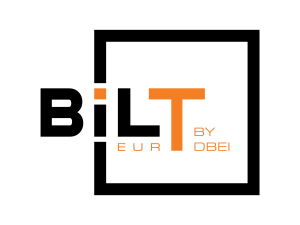


A hands-on BYOBIM workshop on Linked Building Data

https://bit.ly/3h59mvA
About us
Mads Holten Rasmussen
Business Development Director

Alexander Schlachter
VDC Coordinator

Overall agenda
- Session 3.1 | 10:00-11:15
- Why?
- What tech?
- Try yourself!
- Coffee break ☕
- Session 3.2 | 11:30-12:45
- More advanced stuff 🤓😎💪
- Lunch 🥗🥖🍴
Session 3.1
- So why do we need this? 🤷
- Towards a modular and extendable data representation of BIM data 🚀
- Introduction to Linked Data and the Resource Description Framework (RDF) 🌐
- Introduction to Linked Building Data (LBD) 🏠
- Demonstration: LD-BIM 🕹️
- Hands on 🤗 hope you're still awake! 🥱
Current state of BIM and how to improve it
"Our industry works in a document-centric manner rather than a data-centric one"
"Exchange of BIM-data as files makes data integration impossible"
"We need to switch from Today's monolitic nature of BIM to a network based one"
So how do we do this?
The idea is to use the existing infrastructure of the World Wide Web to mediate a distributed, network-based BIM
Web of documents
Web of data
Linked Data
The concept of Linked Data was coined in 2006 by sir Tim Berners-Lee, the inventor of the web, and is therfore not entirely new 👴👵
It basically refers to a set of best practices for publishing structured data on the Web
Linked Data Principles
- Use URIs (Uniform Resource Identifiers) as names for things
- Use HTTP URIs (web addresses) so that people can look up those names 👀
- When someone looks up a URI, provide useful information, using the standards (RDF, SPARQL) (more on this later) 💡
- Include links to other URIs so that they can discover more things 🔭🧭🗺️
Data is stored and hosted by the stakeholder who generated it and is responsible for it
Data can be shared with authenticated people or be made publicly available
The model data can be extended with Linked Open Data (product- and material properties, IoT, GIS)
Even the schemas are distributed, and can therefore extend one another
Current situation: Open standards in isolated closed worlds
Linked data benefit: Standards use, extend and refer to one another
RDF vs. tables
Most of us are used to storing information in spreadsheets (or relational databases (RDBs) for the more advanced), but in RDF we use a graph structure.

RDF: Resource Description Framework
But how do we get from tables to graphs?
Compared to RDBs, RDF makes sense from a logical perspective and not only from a data management perspective.
This benefit will be more obvious when we start to query the datasets!
Knowledge Graph
Querying the graph is as easy as decribing a path along its edges

SPARQL: SPARQL Protocol and RDF Query Language
A modular and extendable building representation
BOT: The Building Topology Ontology
bot:Zone
bot:Element
bot:Interface
Extending BOT
bot:Element? What can I do with that?
Sub-typing BOT classes
Sub-typing BOT properties
Introduction to Linked Building Data (LBD)
👷♀️👷♂️👨🔧👩🎓👨🏫🙋
![]() Linked Building Data (LBD) Community Group
Linked Building Data (LBD) Community Group
Established December 2014
195 members November 2022
A Community to gather best practice use cases in the field of BIM and Linked Data technologies
- Regular meetings to share and discuss new use cases
- Develop and share external ontologies within Linked Building Data
- Current ontologies include OMG (Ontology for Managing Geometry), BOT (Core topological concepts of a building), BPO (Building Product Ontology) and many more
- Everyone is invited to build on top of this foundation, extend the existing ontologies and share new ontologies to the group!
Demonstration
LD-BIM 🕹️🎬
ld-bim.web.appAssignment
Query the model on LD-BIM 🔨🕹️
Assignment 1 handout SPARQL Cheat SheetSession 3.2
- Some practical examples 🎬
- Introduction to assignments 2 and 3 👨🏫
- Convert your own BIM-model 🛠️👷
- Extend the graph 🔨🚧
- The vision of a distributed, cloud based BIM ☁️🤖
- Open discussion 🙋♂️💭
Some practical examples
BART Stage 2 delivery


Incremential reasoning
Demonstration
Convert your own IFC 🕹️🎬
Assignment
Convert your own BIM-model 🔨🕹️
Assignment 2 handoutAssignment
Extend the graph 🔨🕹️
Assignment 3 handoutThe vision of BIM bots 🤖
Rule based flow calculations
Open discussion 🙋♂️💭
- Graphs provide a flexible data structure
- Loose coupling of distributed datasets
- Multiple schemas/ontologies applied in the same dataset
- There is already a foundation you can build on!
Thank you for your attention!
Questions? Thoughts? Ideas? Let's discuss them over a ☕
Learn more
- Buildings and Semantics – Data Models and Web Technologies for the Built Environment, 2022 📘
- Industry 4.0 for the Built Environment, 2021 📕
- BOT: the building topology ontology of the W3C linked building data group, 2021 📃
- BILT Academy Episode Five – Decentralization Part 1, 2020 🎙️🎧
- Managing interrelated project information in AEC Knowledge Graphs, 2019 📃
- Proposing a central AEC ontology that allows for domain specific extensions, 2017 📃
Tools
- Prefix.cc prefix search
- Linked Open Vocabularies schema/ontology search
- WebVOWL Visualization of Ontologies